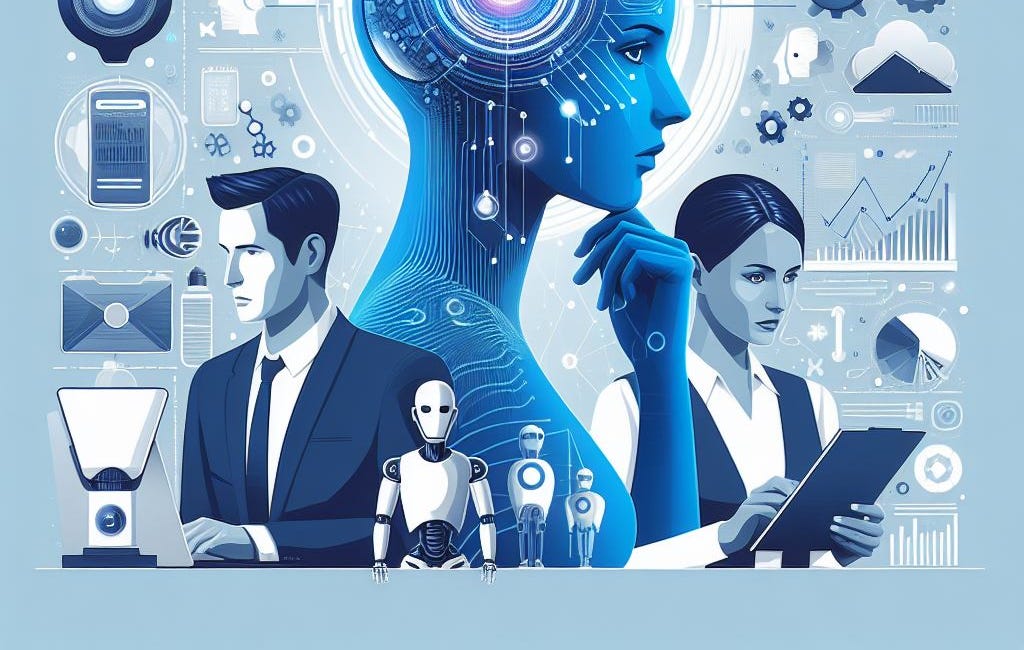UX and AI: When to Trust the Algorithm, When to Push Back
What AI Still Gets Wrong
AI is everywhere.
It writes headlines. It suggests layouts. It even tells you which design performs best.
And if you’re a UXer, you’ve probably asked yourself: Should I trust what it’s telling me?
This issue breaks down how to work with AI in UX practically, critically, and responsibly.
You’ll learn when to lean in, when to step up, and how to make sure AI enhances your work instead of replacing your judgment.
What We Mean by “AI in UX”
Where AI Actually Helps UX Work
When You Should Pause and Question the Output
What AI Still Gets Wrong
How to Balance Speed vs. Ethics
Resource Corner
UXCON25: JUNETEENTH Offer - Valid for 6 days
🤖 What We Mean by “AI in UX”
Let’s get clear:
When we talk about AI in UX, we’re not talking about robots sketching wireframes from scratch.
We’re talking about tools that use machine learning to generate, suggest, or automate parts of your process. Some examples:
Figma AI suggests layouts based on patterns
Uizard and Galileo AI generate UI mockups from text prompts
ChatGPT summarizes user interviews or writes UX copy
Hotjar or Maze use AI to cluster feedback and heatmaps
Userpilot or Mixpanel surface behavioral trends using algorithms
All of these tools are becoming standard in the UX workflow… and they’re fast.
But fast doesn’t always mean right.
Where AI Actually Helps UX Work
When used well, AI can be a power tool making your workflow faster and clearer. Here’s where it shines:
1. Accelerating early drafts
Instead of starting from a blank page, you can generate a rough wireframe, some onboarding copy, or even a flow outline… and iterate from there.
📌 Example: You type “simple mobile onboarding flow for a budgeting app” and get 3 quick layout suggestions in Figma.
2. Summarizing user data
AI can sift through long interview transcripts or open-text survey responses to pull out common themes.
📌 Example: ChatGPT summarizes 10 usability session notes into 3 key patterns. You save 4 hours of manual synthesis.
3. Automating repetitive tasks
Generating UI components, writing alt text, or suggesting A/B test variants AI can take care of the grunt work.
📌 Example: You upload your product screenshots and get 10 accessibility suggestions instantly.
4. Surface-level predictions
Some AI tools can predict drop-off points or friction in a flow based on behavior patterns.
📌 Example: A product analytics tool flags that 70% of users get stuck after step 2 of your checkout flow.
In short, AI is great at helping you move faster especially in pattern-based, repetitive, or data-heavy tasks.
But here’s the catch: it doesn’t know the “why.” That’s your job.
🛑 When You Should Pause and Question the Output
AI can suggest. But you’re still the one making the decision.
Here’s when you need to step in:
1. When the output doesn’t match the context
AI doesn’t know your user, your brand voice, or your edge cases. It works on averages — not on empathy.
📌 Example: AI writes onboarding copy that sounds robotic or excludes certain users (“Welcome, young professionals!” what if your audience is retirees?).
2. When the stakes are high
If your design affects vulnerable users (health, finances, identity) don’t rely on generic suggestions.
📌 Example: AI suggests a layout for a prescription refill app, but it doesn’t account for cognitive load, accessibility, or legal compliance.
3. When the data is biased or unclear
AI learns from what it’s fed. If the input data is flawed, outdated, or skewed, so is the output.
📌 Example: A heatmap tool says your design is fine but it’s based on a test with only desktop users when your product is 80% mobile.
4. When the decision is ethical, not just functional
AI won’t ask: “Is this the right thing to do?” You have to.
📌 Example: The AI suggests hiding cancel buttons to reduce churn. That might boost short-term metrics but hurt trust and long-term loyalty.
⚖️ How to Balance Speed vs. Ethics
Here’s the mindset shift:
AI is a co-pilot, not the captain.
It can make suggestions, accelerate drafts, or highlight patterns but it can’t feel, reason, or anticipate consequences.
So ask yourself:
Does this output align with what we know about our users?
Could this solution exclude, confuse, or harm anyone?
Are we prioritizing convenience over clarity?
Would I still make this decision if no one saw the metrics?
In other words: let AI handle the repetitive.
But keep the human work… the judgment, empathy, and responsibility YOURS.
📚 Resource Corner
Ethical Considerations for AI-powered UX
·The rise of Artificial Intelligence (AI) in UX design offers exciting possibilities for personalization, automation, and creating m…
Google’s People + AI Guidebook – For designing human-centered AI experiences
UXCON25 Spotlight: Designing with AI, Not for AI
At UXCON25, we’re asking the big questions:
Where does human judgment matter most in AI workflows?
How do real teams use AI without compromising accessibility or trust?
What’s the difference between ethical automation and dark patterns dressed up in data?
You’ll hear from designers who use AI in their work but don’t let it take over. This is about staying thoughtful, creative, and human in how we design.
And in honour of Juneteenth, we’re offering a quiet nudge to help you be in that room.
A limited-time discount is now live no code. Just a gesture to make it easier to say yes.
P.S. It’s valid for the next 6 days.
Final Thought: You’re Still the Designer
AI can speed you up. It can suggest things you might not have considered.
But it’s not going to fight for your users. It’s not going to push back when something feels wrong.
That’s still your job.
And it’s never been more important.
So yes, work with AI. But question it. Shape it.
And always remember who you're designing for.




